When I was little, there was one event that trumped everything else that childhood had to offer. Forget the magic of Christmas. Forget birthdays, grandparent visits, parties or holidays: They all paled in comparison to The Day My Mum Had Something Delivered in a Giant Box.
A large cardboard box is like a magnet to children. Even my 12 year old would fight the cat for a go in one, bombarding me with requests as soon as a delivery arrives: “Have you finished with the box yet? Can I have it for craft? Can I get in it? Can I cut eyeholes in it and spy on you?” They guarantee days of fun and - dare I say it - a bit of peace and quiet if you’re lucky. Fortunately, at this time of year, you are likely to have at least one big box delivered to your house. Here is our round up of brilliant things to do with a big box:
Turn it into a boat
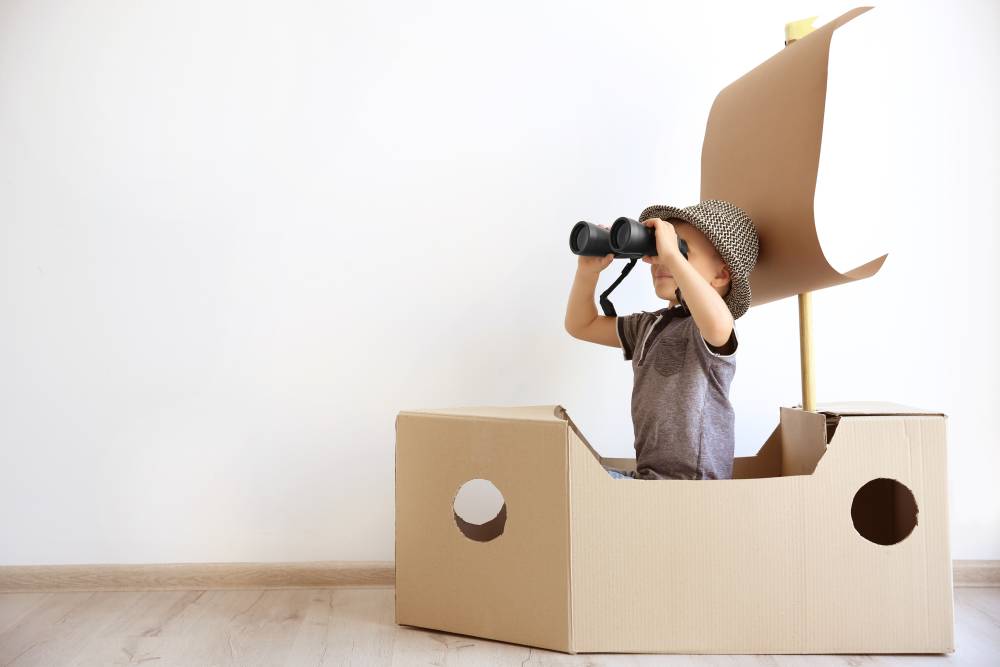
Perfect for: role play, learning about the world
This can be as simple or as complicated as you like. Small children have enormous imaginations, so if you want to go all-out and make something Pinterest worthy, go ahead and look up a tutorial. However, if the best you can do is a pair of wooden spoons for ‘oars’ and the assurance that the box really is a boat, your child will be just as thrilled. They can sit in it singing Row Row Row the Boat while you push it along, you can tie a string to it for them to pull so they can take the teddies for a boat trip. Provide a paper hat, and an empty kitchen roll tube for a telescope and suddenly you’re pirates. However, I’d hold off from floating your ‘boat’ in the bath water unless you have a particularly stoic child as it is likely to disintegrate within seconds.
Put on a performance

Perfect for: Speaking and listening, role play, performing
Cut out the bottom of the box, leaving a small margin around the edges to make a television screen. Put it on the coffee table, give your child a microphone (a hairbrush will do nicely) and let them go to town presenting their own TV show. You could add curtains to the front (a couple of tea towels work well) to make a theatre instead. Your child could either perform in the theatre themselves or use their cuddly toys or puppets to put on a show. Jazz hands optional.
Create an abstract masterpiece
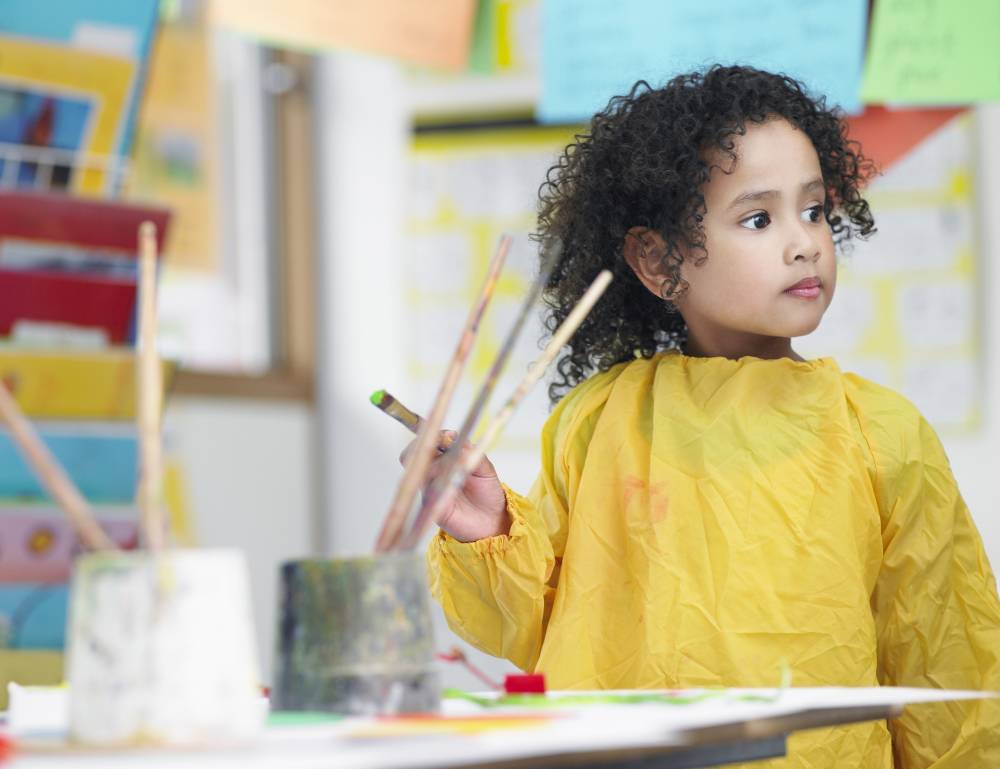
Perfect for: developing creativity, learning about colours, learning about how things move.
If your cardboard box is smaller, try taping a sheet of paper to the bottom of the inside. Dip a few marbles (or bouncy rubber balls for younger children who might be tempted to put marbles in their mouth) in paint, add them to the box, close the lid and give it a shake. Open the box to see what has happened. What colours they you see? How would they describe the pattern? How do they think that happened? What else could they use instead of marbles? Experiment and have fun.
Dress up
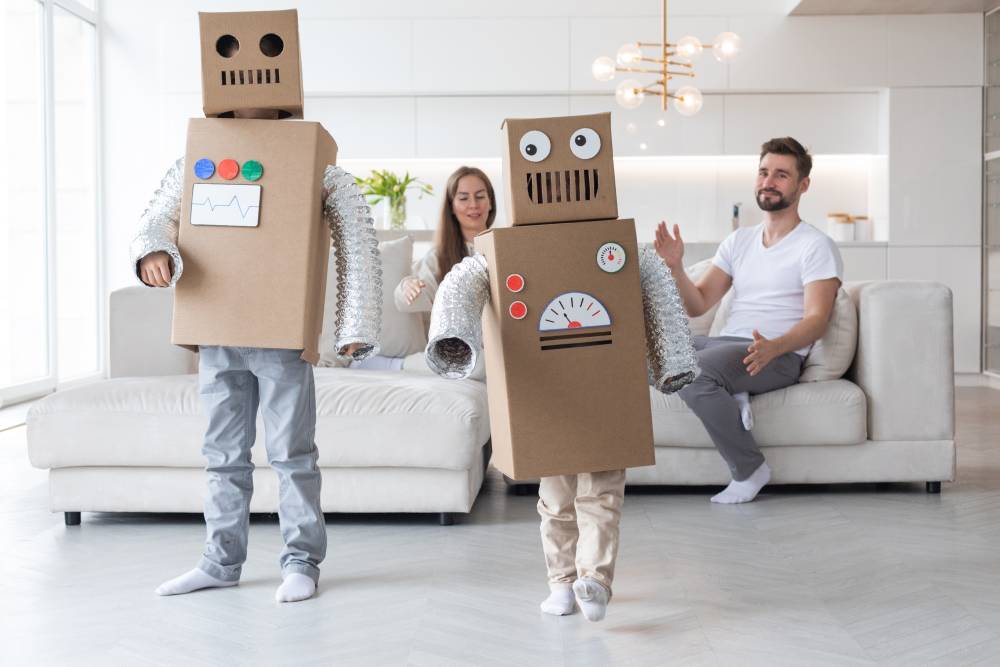
Perfect for: role play, learning about technology, and… cough...some fab, Instagram-worthy photos
Cardboard boxes lend themselves to making brilliant robot costumes. Cut a couple of holes for arms in a medium sized box and use a smaller box for the head. Get your child add the finishing touches with buttons (milk bottle tops), wires (pipe cleaners) and levers (teaspoons). Help your child to put the costume on then press the buttons and pull the levers to see what each one does. Give them some ideas to get them started (e.g. the turn around button/the jumping lever etc). I find it helps if you add a special ‘tidy up’ button to the costume for a bit of robot assistance with the clean up.
Make the ultimate den
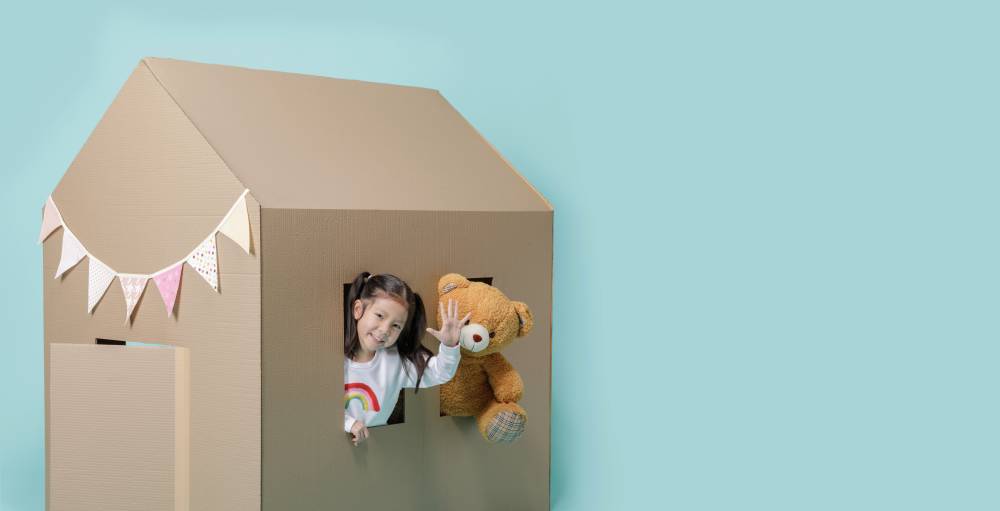
Perfect for: role play and just feeling lovely and snuggly.
Anything goes here. With a bit of creativity you can turn a box or two into a cosy cottage, a tent, a cave, or even the ultimate supervillian’s lair: it’s all in the accessories. Pinterest have a lot of easy tutorials which you can adapt to your child’s interests. For a basic house, open the box and cut the top flaps or use part of another box to make a pointy roof. Tape this on, cut out some square windows, add blankets and a selection of snacks and you’re good to go.
Stack them up
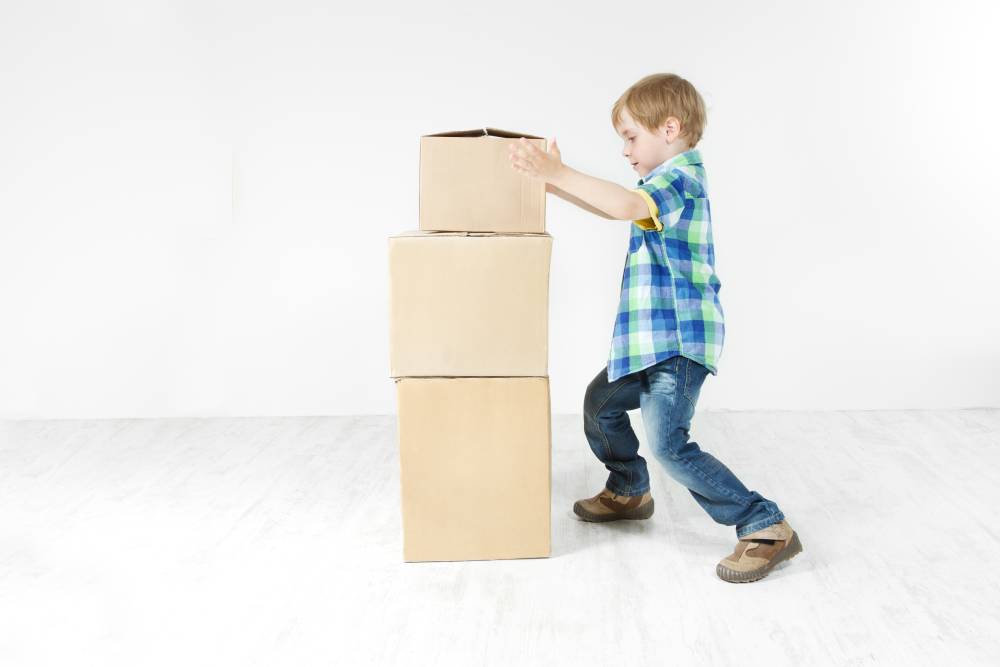
Perfect for: gross motor skills, creativity, mathematical development (comparing heights and lengths, and exploring 3D shapes)
If you have a selection of medium and small boxes and a large space, try taping them closed and letting children build with them. The boxes can be stacked high, knocked down, lined up or used to build representations of objects (e.g. a house or a statue). Let the child take the lead and see where it goes.
Make a fun game
Perfect for: hand-eye coordination, counting and early addition
Do you have a skittles set or a lot of plastic bottles in the recycling? Open out a couple of large boxes and put them together to make a long run, trimming the sides down to 20-30cm. Set up the skittles/bottles at one end, put the balls at the other end and have a bowling tournament in your homemade bowling alley. STRIKE! Count how many skittles are knocked down each time. If you don’t have any skittles, place a medium box at one end of the bowling alley and cut little arches big enough for a small ball to fit through along the bottom. Label the arches with numbers from 1-5. Children can roll small balls down the run, aiming to get the ball into one of the arches. The numbers show how many points you get for each arch. You could use counters to keep track of the points.
Make a garage
Perfect for: Learning about forces, learning about the world around us.
If you’ve got a car obsessed child, you’ll know that they can happily spend hours wheeling them about on any surface. Use a cardboard box to make a garage with plenty of ramps and parking spaces. If you’re feeling extra creative, you could even add some sliding garage doors. Remember to add road markings, signs and obstacles to make it realistic. A reel of Sellotape or an empty cheese spread box makes a good roundabout, and you could add different textures to the roads (try adding sand to a layer of PVA glue). Talk about what happens to the cars when they drive along each different road surface.
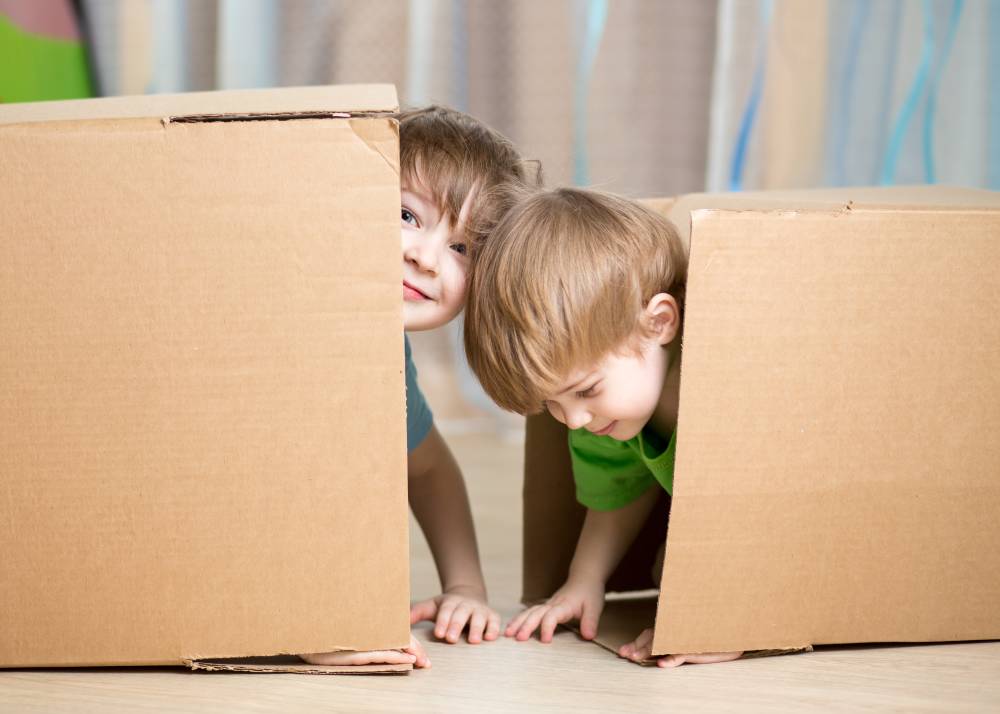
Hopefully these ideas will start you off nicely, but the possibilities are endless. However, the most important thing to remember is to let your child take the lead. You might want to spend hours making an impressive project but young children aren’t great at delayed gratification and their imaginations fill in the details anyway. And if they just want to hide in the empty box for hours, let them. They’ll be creative with it in their own way and, lets be honest, hiding in boxes is brilliant. Don’t believe me? Get in one with a box of Chocolate Fingers, then close the lid. Bliss. You can thank me later.







